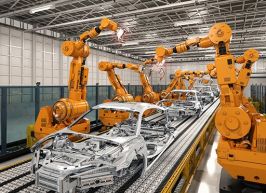Зарегистрируйтесь на getAbstract, чтобы получить доступ к этому краткому изложению.

Зарегистрируйтесь на getAbstract, чтобы получить доступ к этому краткому изложению.
Marc Levinson
The Box
How the Shipping Container Made the World Smaller and the World Economy Bigger
Princeton UP, 2006
Что внутри?
Standardized containers are the mechanism that made global shipping fast and cheap. Now, whose bright idea was that?
Recommendation
Happy fiftieth birthday to the shipping container, that unexciting, unglamorous cog in the wheels of commerce that just so happened to change the world. Most people might have ignored the import of the box during the past half-century, but economist Marc Levinson offers an insightful tale that will help you appreciate this oft-overlooked advancement. If it weren't for the container, Levinson argues persuasively, for good or ill, there could be no Wal-Mart and U.S. manufacturing jobs couldn't have migrated to China. This history lesson recounts the box inventor's quest and offers some subtle perspective for businesspeople struggling to foretell the future. At times, Levinson bogs down in the details of 1950s labor relations, but his work mostly moves quickly through the highs and lows of the container's story. getAbstract recommends this revealing tale to anyone in the global economy.
Summary
About the Author
Marc Levinson is an economist in New York and author of three previous books, including The Economist Guide to Financial Markets and Beyond Free Markets: The Revival of Activist Economics. He has worked at The Economist, Newsweek and the Journal of Commerce.





















Comment on this summary